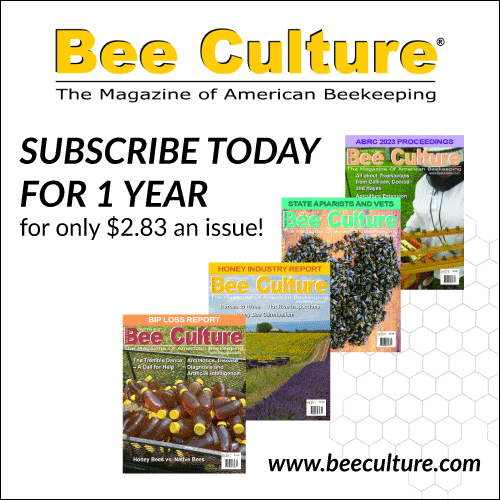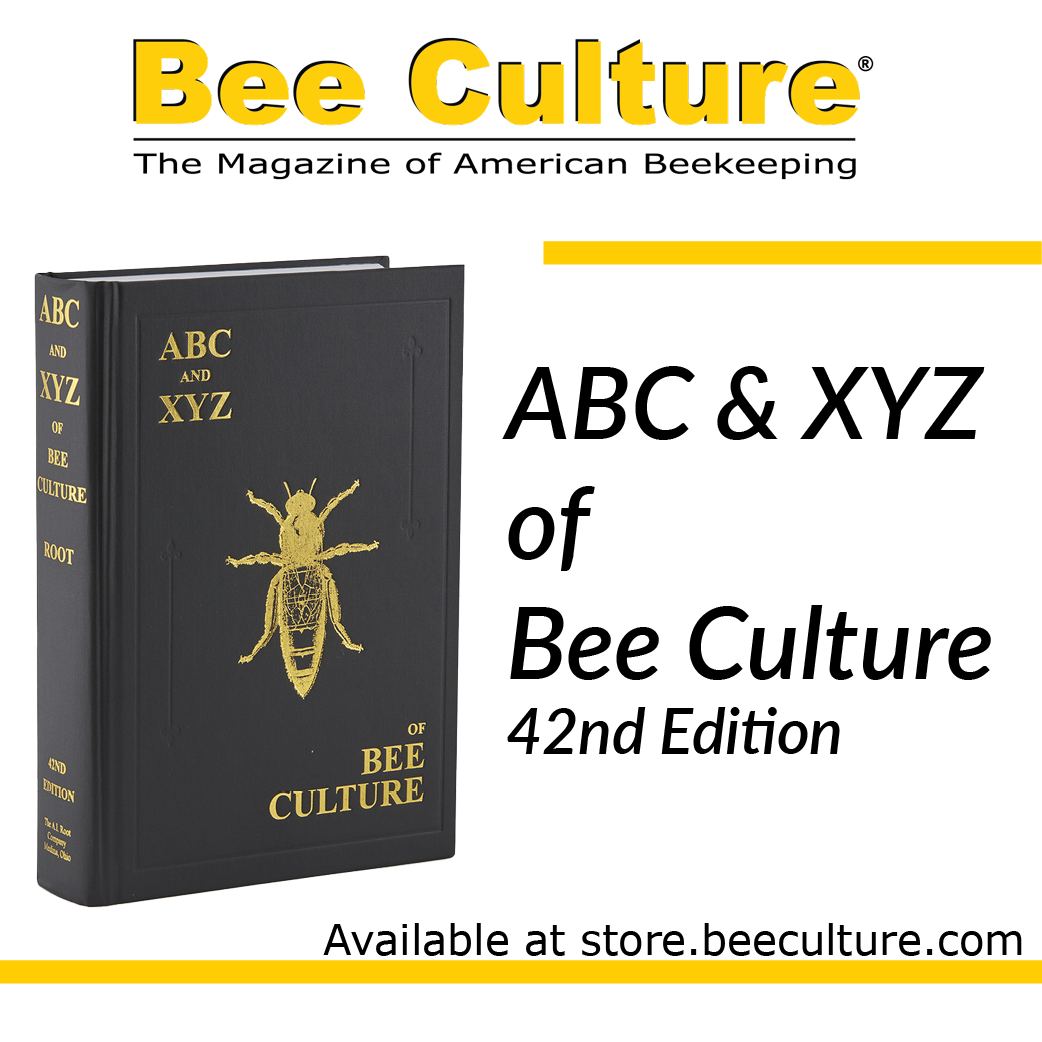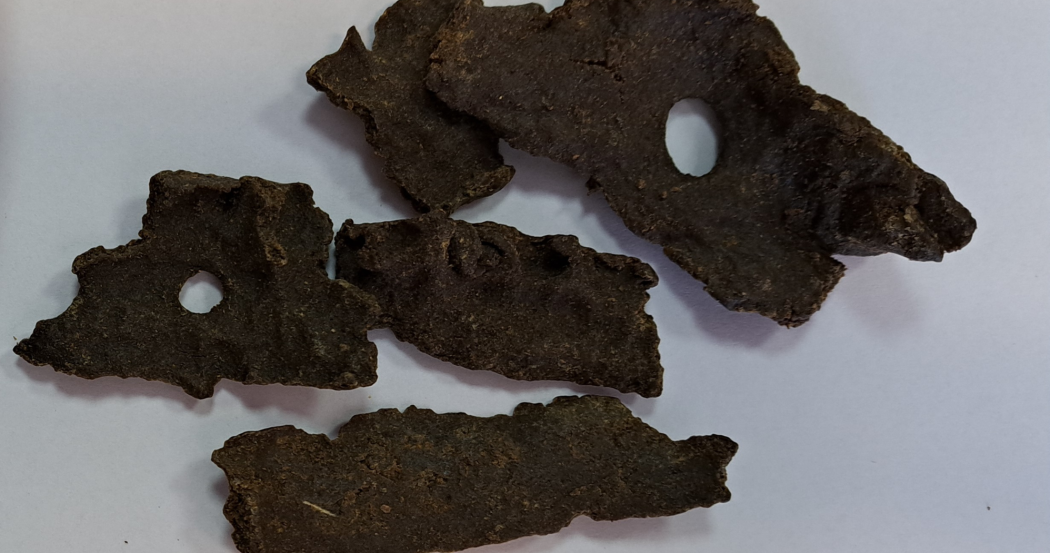By: Dvykaliuk Roman

Fig. 1. A 3D model of CPI (Intelligent Collector of Propolis) (Breyer, 2016)
Notes: A – case for stacking the collector; B – Intelligent Collector of Propolis; C – insert board for closing the hole in the case
Propolis is a sticky resinous substance collected from the buds, leaves and stems of wild plants and processed by bees, which has bactericidal properties and is used by bees to seal cracks in a hive, polish walls of wax cells and embalm corpses of enemies (mice, reptiles, etc.) (DSTU 4662, 2006). The sources of propolis are plants from which honey bees collect resin. However, not all plants that secrete resin are sources of propolis. The physical properties of plant resin, accessibility to bees, and anatomical features of a honey bee exoskeleton underlie the hypothesis of plant selection for propolis collection (Langenheim, 2003; Salatino and Salatino, M. L. F., 2017). In the mild climate zone Ukraine belongs to, honey bees collect plant resins mainly from Populus nigra L., Populus tremula L. and Betula pubescens L., which determines chemical and physical properties of the yield. Subsequently, bees bring plant resins to the nest and use them to seal cracks or to build their structures (Isidorov et al., 2016; Przybyłek and Karpiński, 2019).
Using the bees’ instincts to seal cracks in the nest, protect the nest from pests and the need to maintain the microclimate of the bee nest at the proper level, beekeepers collect propolis in industrial volumes mainly in two ways. The first one is to modify walls of hives and use collectors, and the second is to place nets (grids) over the honey bee nest (Breyer, 2016; Tsagkarakis et al., 2017).

Fig. 2. Green propolis obtained in Brazil (photo by the author, 2022)
In countries with a tropical climate, where the outside temperature resembles the microclimate of the bee nest, propolis collectors are placed on holes in the outer walls of hives (Fig. 1, 2).
Placement of this type of collector implies that products (honey, pollen) will not be taken from bee families. The presence of food in the nest helps to increase productivity of the bee family. Another important technological aspect is that propolis apiaries migrate to areas rich in plant sources of propolis. It should be noted that such a method as moving to propolis sources is not used in mild climate zones.
Today, according to the state register, there are 54,406 beekeeping households in Ukraine with 2,579,453 bee colonies. Since registration is voluntary, these figures are not final. There are two ways to collect propolis in Ukraine: the first is to clean the nest elements (frames, parts of the hive, etc.) with a beekeeper’s chisel; the second is to place elastic nets or plastic grids over the honey bee nest in the hives. The first method mentioned of extracting propolis is unproductive and outdated and yields in a small amount of propolis, which is mainly contaminated with wood splinters and parts of bee bodies. Such propolis is used for personal and technical needs. The second method, which uses special collection equipment, such as elastic nets and plastic grids, is more productive for big apiaries. At the same time, obtaining 300-500 nets or grids covered with propolis on a farm requires their cleaning. The lack of equipment to automate the process of nets or grids cleaning of propolis and the use of manual labor lead to higher product prices, lower quality and unprofitable production. The use of manual labor to clean propolis may be accompanied by a violation of sanitary and hygienic conditions due to the human factor.

Fig. 3. Experimental 3D model of a device for collecting propolis.
Notes: 1 – a set of gears; 2 – lower and upper pair of shafts, protrusions of which fit one-to-one; 3 – an electric motor; 4 – a hole for inserting nets with propolis; 5 – an outlet; 6 – an electric cable; 7 – a switch; 8 – a protective chamber; 9 – a power cable compartment; 10 – a metal frame
As part of our dissertation research on “Scientific and technical support of the process and equipment for propolis production” at the National University of Life and Environmental Sciences of Ukraine in 2020-2023, we designed, manufactured and tested a device for cleaning propolis-coated elastic nets (Fig. 3).
Manufacture of the device and its introduction into production help to fill in gaps in the technology of obtaining high quality propolis.
To extract propolis using the device, beekeepers follow the sequence of actions:
- place elastic nets in hives to collect propolis (it is recommended to use nets made of ethylene vinyl acetate (EVA));
- place nets on the upper bars of frames after they are cleaned of wax residues and existing propolis;
- inspect bee colonies as is customary on the farm;
- after the bees cover nets with propolis, shift them so that an entire net is covered with propolis (approximately 20-30 calendar days, depending on availability of the plant base and propensity of the bee family to accumulate propolis);
- collect nets from bee colonies and roll for easy transportation and further cooling (Fig. 4, B);
- for high-quality cleaning of nets with propolis using the device, it is enough to cool nets at a temperature of +5°C for 60-90 minutes, depending on the type of propolis;
- insert the cooled nets into the cleaning device (Access the author’s accounts YouTube channel: https://youtu.be/QktpMJc-0hY?si=MOMb8R6w7LrkgJ2C).

Fig. 4. Propolis obtained at Ukrainian beekeeping farms using the new technology (photo by the author, 2021) Notes: Right – propolis purified from elastic nets using the device; Left – elastic nets covered with propolis obtained from beekeeping farms in Ukraine
 After the cleaning is completed, nets are returned to the bee colonies, if necessary, and the obtained propolis is packed and stored for further use.
After the cleaning is completed, nets are returned to the bee colonies, if necessary, and the obtained propolis is packed and stored for further use.
Nets in the device are cleaned mechanically. One net can be cleaned with the device 100 or more times without visible mechanical damage. The specially designed shafts of the device are pulled into the net and simultaneously bend it in a wave-like manner. During this bending, the propolis is shed in the lower tray. For comfortable work of the operator, the room temperature can be +20-22°C. In countries with tropical climates, it is possible to place the net cleaning device in honeycomb storages, where the temperature is always kept low, which will provide additional savings on room cooling. The propolis harvesting device can be used by beekeepers to clean 227 nets in one working day (eight hours). The developed device has been patented: patent No. 139736 “Device for collecting propolis” (UA). Details of the development and operation of the device were presented at the 47th Apimondia Congress (Istanbul) (PP-177).
For more detailed information on the operation of the device for cleaning nets from propolis and other research papers of the author, please use the link by QR code (Access the author’s account in the scientific social network ResearchGate: https://www.researchgate.net/profile/Roman-Dvykaliuk).
Dvykaliuk Roman, Chairman of the Board of BeesAgro Controlled Pollination Association; PhD candidate of the National University of Life and Environmental Sciences of Ukraine; Kyiv, Ukraine.
E-mail: Roman.Dvykaliuk@delta-sport.kiev.ua
References
DSTU 4662:2006 “Propolis (Bee Glue). Specifications” (2007). Kyiv: State Standards of Ukraine
Salatino, A., & Salatino, M. L. F. (2017). Why do honeybees exploit so few plant species as propolis sources. MOJ Food Processing & Technology, 4(5), 158–160. https://doi.org/10.15406/mojfpt.2017.04.00107
Langenheim, J. H., 2003. Plant Resins: Chemistry, Evolution, Ecology, and Ethnobotany. Timber Press., Portland,OR, USA.
Isidorov, V. A., Bakier, S., Pirożnikow, E., Zambrzycka, M., Swiecicka, I. Selective behaviour of honeybees in acquiring European propolis plant precursors. Journal of chemical ecology. 2016. Vol. 42(6), Р. 475–485. https://doi.org/10.1007/s10886-016-0708-9
Przybyłek, I., & Karpiński, T. M. (2019). Antibacterial properties of propolis. Molecules, 24(11), 2047. https://doi.org/10.3390/molecules24112047
Breyer, H. F. E., Breyer, E. D. H., & Cella, I. (2016). Produção e beneficiamento da própolis [Production and processing of propolis]. Boletim Didático, 1, 30. https://publicacoes.epagri.sc.gov.br/BD/article/view/405 [in Portuguese]
Tsagkarakis, A. E., Katsikogianni, T., Gardikis, K., Katsenios, I., Spanidi, E., & Balotis, G. N. (2017). Comparison of Traps Collecting Propolis by Honey Bees. Advances in Entomology, 5(02), 68. 5. https://doi.org/10.4236/ae.2017.52006
Device for collecting propolis [Prystrii dlia zboru propolisu]: pat. 139736 Ukraine. № u 201910696; decl. 29.10.2019. publ. 10.01.2020. Bul. № 1. (in Ukrainian)









